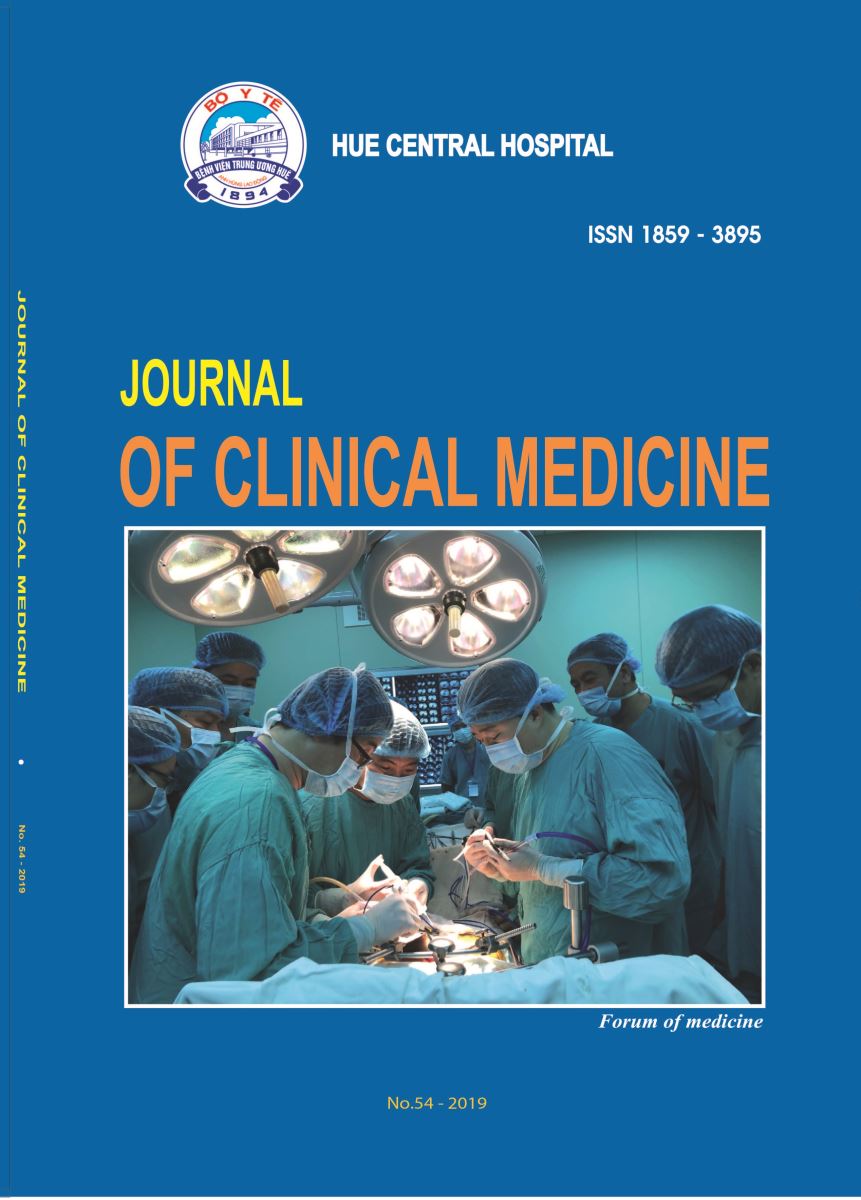Abstract
Bối cảnh: Bất thường nối tụy mật (PBM) là dị tật bẩm sinh hiếm gặp và có nguy cơ tiềm ẩn ung thư.
Mục tiêu: Trình bày một trường hợp viêm tụy cấp liên quan đến PBM và tổng quan tài liệu.
Phương pháp: Nghiên cứu báo cáo ca bệnh.
Kết quả: Một trường hợp nữ 16 tuổi đến khám với tình trạng viêm tụy cấp và sỏi ống mật chủ (CBD). Các triệu chứng chính là đau bụng, tăng men tụy huyết thanh và xét nghiệm chức năng gan bất thường. Chụp CT-Scan, MRCP và ERCP phát hiện giãn ống mật chủ (10mm), kênh chung dài (3-4cm) và nghi ngờ có sỏi ống mật chủ. Bệnh nhân được phẫu thuật nội soi với cắt túi mật-CBD và nối gan-hỗng tràng Roux-en-Y và được xuất viện trong tình
trạng tốt.
Kết luận: PBM nên được coi là nguyên nhân tiềm ẩn gây viêm tụy tái phát, đặc biệt ở những bệnh nhân trẻ. Nguy cơ ung thư đã được xác nhận rõ ràng và cần được quản lý phù hợp.
References
Jiro Ohuchidam MD; Kazuo Chijiiwa, MD, PhD, Masahide Hiyoshi, MD; Kiichiro Kobayachi, Hiroyuki Konomi, Masao Tanaka.Long-term Results of Treatment for Pancreaticobiliary Maljuntion Without Bile Duct Dilatation. Arch Surg, 2006;141:1066-1070
Jin-Seok Park, Tae Jun Song, Tae Young Park, Dongwook Oh, Hyun Kyo Lee, Do Hyun Park, Sang Soo Lee, Dong Wan Deo, Sung Koo Lee,
and Myung-Hwan Kim. Predictive Factor of Biliary Tract Cancer in Anomalous Union of the Pancreaticobiliary Duct. 2016, Medicine 95(20):e3526.
Hiroki Ishibashi et al (2017). Japanese clinical practice guidelines for congenital biliary dilatation. J Hepatobiliary Pancreat Sci.: 44860-
Terumi Kamisawa, Hisami Ando, Mitsuo Shimada, Yoshinori Hamada, Takao Itoi, Tsukasa Takayashiki, Masaru Miyazaki. Recent
advances and problems in the management of pancreaticobiliary maljunction: feedback from the guidelines committee. J Hepatobiliary
Pancreat Sci,2014, 21:87–92
Terumi Kamisawa et al (2012). Japanese clinical practice guidelines for pancreaticobiliary maljunction. J Gastroenterol, 47:731–759.
Terumi Kamisawa et al (2014). Diagnostic criteria for pancreaticobiliary maljunction 2013. J Hepatobiliary Pancreat Sci 21:159–161.
Naoto Urushihara (2017). Classification of pancreaticobiliary maljunction and clinical features in children. J Hepatobiliary Pancreat Sci
:449–455.
Terumi Kamisawa, Goro Honda (2019). Pancreaticobiliary Maljunction: Markedly High Risk for Biliary Cancer. Digestion; 99: 123–125.
| Published | 24-01-2025 | |
| Fulltext |
|
|
| Language |
|
|
| Issue | No. 54 (2019) | |
| Section | Case report | |
| DOI | ||
| Keywords | Pancreaticobiliary maljunction |

This work is licensed under a Creative Commons Attribution-NonCommercial-NoDerivatives 4.0 International License.
Copyright (c) 2019 Journal of Clinical Medicine Hue Central Hospital

